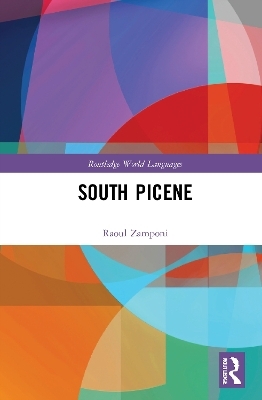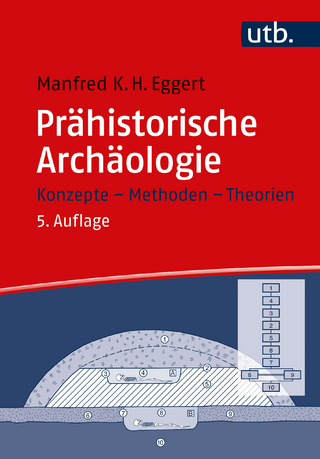
South Picene
Routledge (Verlag)
978-0-367-65251-7 (ISBN)
South Picene is the pre-Roman language spoken in the Adriatic sector of central Italy. This book presents a description of what we know about the structure of this language.
South Picene is (together with Umbrian, Oscan, Latin, and Faliscan) one of the few members of the Italic branch of the Indo-European family and is also one of the European languages with the oldest existing texts (550 BCE). Besides a grammatical outline of the language, the book contains the linguistic (and often stylistic) analysis of all the 21 inscriptions that compose the South Picene epigraphic corpus and a word list.
South Picene will be of interest to students and scholars of Indo-European languages, Italic languages, and in general, ancient languages of the Italian peninsula.
Raoul Zamponi works primarily on little-known, extinct languages and is currently a research associate at the Max Planck Institute for the Science of Human History in Jena. He has previously held positions at the University of Siena and as principal investigator on a range of linguistic projects in Italy, Germany, and the USA.
Contents
List of Tables
Preface
Abbreviations and Symbols
Conventions
1 Introduction
1.1
The epigraphic corpus
1.2
The script
1.3
State of the art
1.4
Genealogical position
1.5
Dialects
1.6
Extinction
2 Phonology
2.1
Phonemes
2.2
Intermezzo: The vocalic values of the letter u
2.3
Accentuation
2.4
Syllable structure
2.5
Phonological processes
3 Morphology
3.1
Nouns
3.2.1
Personal names
3.2
Pronouns
3.3
Adjectives
3.4
Definite article?
3.5
Verbs
3.5.1
Finite verbs
3.5.1.1
Person and number
3.5.1.2
Voice
3.5.1.3
Tense
3.5.1.4
Mood
3.5.2
Non-finite verbs
3.6
Adpositions
3.7
Adverbs
3.8
Conjunctions
3.9
Particles
3.10
Derivation
4 Syntax
4.1
Noun phrase
4.2
Adpositional phrase
4.3
Clause
4.3.1
Verbal clause
4.3.2
Copular clause
4.4
Complex sentence
4.4.1
Relative clause
4.4.1.1
Finite relative clause
4.4.1.2
Participial relative clause
4.4.2
Adverbial clause
5. Inscriptions
5.1
AP.1 (Acquaviva)
5.1.1
Text
5.1.2
Analysis
5.1.3
Translation
5.1.4
Specific reference materials
5.1.5
Stylistics
5.2
AP.2 (Castignano)
5.2.1
Text
5.2.2
Analysis
5.2.3
Translation
5.2.4
Stylistics
5.2.4
Specific reference materials
5.3
AP.3 (Belmonte Piceno)
5.3.1
Text
5.3.2
Analysis
5.3.3
Translation
5.3.4
Specific reference materials
5.4
AP.4 (Falerone)
5.4.1
Text
5.4.2
Analysis
5.4.3
Translation
5.4.4
Specific reference materials
5.5
AP.5 (Servigliano)
5.5.1
Text
5.5.2
Analysis
5.5.3
Translation
5.5.4
Specific reference materials
5.6
AP.6 (Belmonte Piceno)
5.6.1
Text
5.6.2
Analysis
5.6.3
Translation
5.6.4
Specific reference materials
5.7
AQ.1 (Castel di Ieri)
5.7.1
Text
5.7.2
Analysis
5.7.3
Translation
5.8
AQ.2 (Capestrano)
5.8.1
Text
5.8.2
Analysis
5.8.3
Translation
5.8.4
Specific reference materials
5.9
AQ.3 (Castel di Ieri)
5.9.1
Text
5.9.2
Analysis
5.9.3
Translation
5.10
5.10. CH.1 (Crecchio)
5.10.1
Text
5.10.2
Analysis
5.10.3
Translation
5.10.4
Specific reference materials
5.11
CH.2 (Pescara Valley)
5.11.1
Text
5.11.2
Analysis
5.11.3
Translation
5.11.4
Specific reference materials
5.12
MC.1 (Loro Piceno)
5.12.1
Text
5.12.2
Analysis
5.12.3
Translation
5.12.4
Stylistics
5.13
MC.2 (Mogliano)
5.13.1
Text
5.13.2
Analysis
5.13.3
Translation
5.13.4
Stylistics
5.13.5
Specific reference materials
5.14
RI.1 (Cures-Fara in Sabina)
5.14.1
Text
5.14.2
Analysis
5.14.3
Translation
5.14.4
Specific reference materials
5.15
TE.1 (Sant’Omero)
5.15.1
Text
5.15.2
Analysis
5.15.3
Translation
5.15.4
Specific reference materials
5.16
TE.2 (Bellante)
5.16.1
Text
5.16.2
Analysis
5.16.3
Translation
5.16.4
Stylistics
5.16.5
Specific reference materials
5.17
TE.3 (Bellante)
5.17.1
Text
5.17.2
Analysis
5.17.3
Translation
5.18
TE.4 (Campovalano)
5.18.1
Text
5.18.2
Analysis
5.18.3
Translation
5.18.4
Specific reference materials
5.19
TE.5 (Penna Sant’Andrea)
5.19.1
Text
5.19.2
Analysis
5.19.3
Translation
5.19.4
Stylistics
5.19.5
Specific reference materials
5.20
TE.6 (Penna Sant’Andrea)
5.20.1
Text
5.20.2
Analysis
5.20.3
Translation
5.20.4
Specific reference materials
5.21
TE.7 (Penna Sant’Andrea)
5.21.1
Text
5.21.2
Analysis
5.21.3
Translation
5.21.4
Specific reference materials
5.22
Inscriptions of doubtful attribution
5.22.1
BA.1 (Canosa di Puglia)
5.22.2
BO.1 (Bologna)
6 Wordlist
7 Conclusion
Notes
References
Index
| Erscheinungsdatum | 09.03.2021 |
|---|---|
| Reihe/Serie | Routledge World Languages |
| Zusatzinfo | 84 Tables, black and white; 29 Halftones, black and white; 29 Illustrations, black and white |
| Verlagsort | London |
| Sprache | englisch |
| Maße | 156 x 234 mm |
| Gewicht | 453 g |
| Themenwelt | Schulbuch / Wörterbuch ► Wörterbuch / Fremdsprachen |
| Geschichte ► Allgemeine Geschichte ► Vor- und Frühgeschichte | |
| Geschichte ► Allgemeine Geschichte ► Altertum / Antike | |
| Geisteswissenschaften ► Sprach- / Literaturwissenschaft ► Anglistik / Amerikanistik | |
| Geisteswissenschaften ► Sprach- / Literaturwissenschaft ► Literaturwissenschaft | |
| Geisteswissenschaften ► Sprach- / Literaturwissenschaft ► Sprachwissenschaft | |
| ISBN-10 | 0-367-65251-X / 036765251X |
| ISBN-13 | 978-0-367-65251-7 / 9780367652517 |
| Zustand | Neuware |
| Haben Sie eine Frage zum Produkt? |
aus dem Bereich


